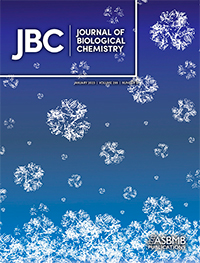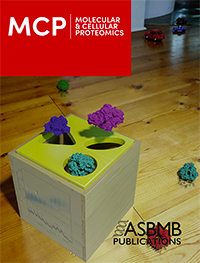The American Society for Biochemistry and Molecular Biology advances scientific knowledge by reducing barriers to research. ASBMB journals are gold open access.
Who we are and what we do: Founded in 1906, the ASBMB has advanced science discoveries in the life sciences by publishing and promoting the highest-quality research in biochemistry and molecular biology.
Why us?: ASBMB journals are committed to helping scientists disseminate their findings in the most efficient and effective way. We strive to keep review times short, provide useful feedback and promote contributions after publication.
Journal of Biological Chemistry
The Journal of Biological Chemistry seeks to elucidate the molecular and cellular basis of biological processes. In addition, JBC welcomes articles that describe methods that will help scientists push their biochemical inquiries forward and resources that will be of use to the research community.
All accepted manuscripts are available to the public for free within 48 hours of acceptance. The average time from submission to first decision is 21 days for regular articles and even shorter for JBC Communications.
Researchers at Hokkaido University identify the enzyme behind a key lipid in sperm development. The findings reveal how seminolipids shape sperm formation and may inform future diagnostics and treatments for male infertility.
Philip Cole presented his research on how posttranslational modifications to histones are involved in gene expression and how these modifications could be therapeutically targeted to treat diseases like cancer.
Researchers from the University of Melbourne engineered Plasmodium vivax diagnostic protein with enhanced yield and stability while preserving antibody-binding, paving the way for more reliable malaria testing.
Molecular & Cellular Proteomics
Molecular & Cellular Proteomics publishes articles such as research articles, reviews, technological innovation resources and perspectives, that make a substantial contribution to the understanding of any area of proteomics. MCP has been a leading force in setting up the standards for proteomics reporting by creating guidelines for mass spectrometric analyses covering protein, peptide or post translational modifications and quantification.
Visit MCPLearn more about MCP
Yale scientists developed a mass spec protocol that keeps proteins in their native environment, detects intact protein complexes and tracks drug binding, offering a clearer view of membrane biology.
University of Wisconsin–Madison researchers devised a method that prevents protein compaction during cryoEM prep, restoring natural structure for mass spec studies. The approach could expand high-resolution imaging to more complex protein systems.
Researchers developed a method that improves limited proteolysis coupled with mass spectrometry, separating true changes from abundance or splicing effects.
Journal of Lipid Research
The Journal of Lipid Research focuses on the science of lipids in health and disease. The journal emphasizes lipid function and the biochemical and genetic regulation of lipid metabolism and aims to be on the forefront of the emerging areas of genomics, proteomics, metabolomics and lipidomics as they relate to lipid metabolism and function. In addition, JLR publishes manuscripts on patient-oriented and epidemiological research relating to altered lipid metabolism, including modification of dietary lipids.
Using a new imaging method, researchers at State University of New York at Buffalo traced fentanyl’s effects inside brain immune cells, revealing how the drug alters lipid droplets, pointing to new paths for addiction diagnostics.
Researchers in Quebec identified lower levels of a brain cholesterol metabolite, 24-hydroxycholesterol, in patients with fragile X syndrome, a finding that could provide a simple blood-based biomarker for understanding and managing the condition.
Researchers explored the lipid profiles of individuals with type 2 diabetes and identified potentially useful lipid biomarkers for this condition.



